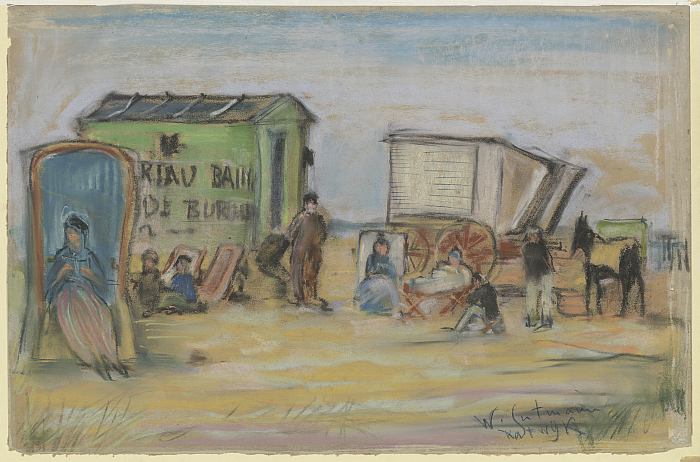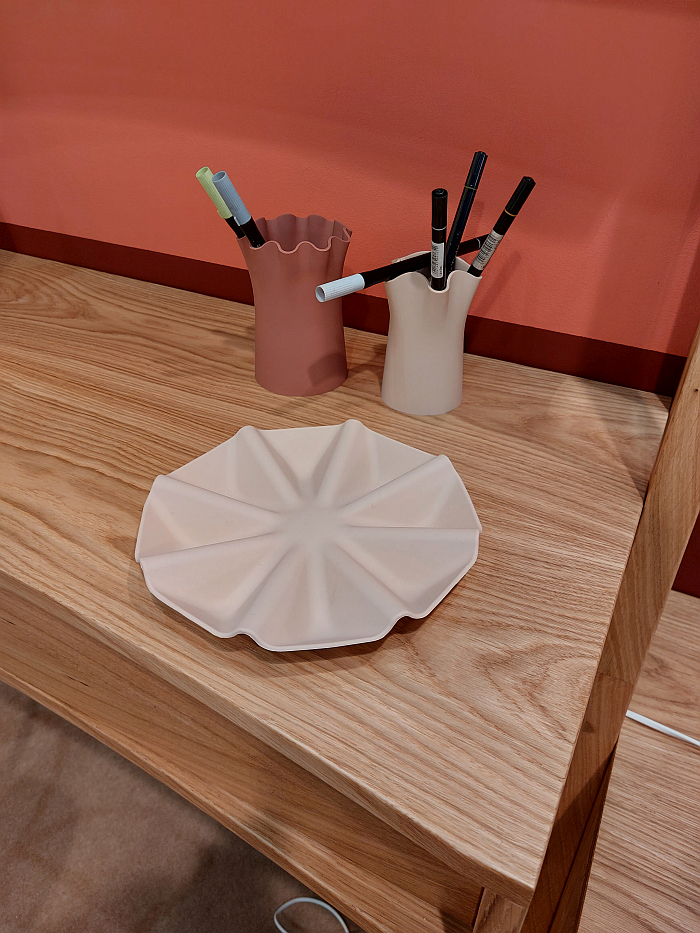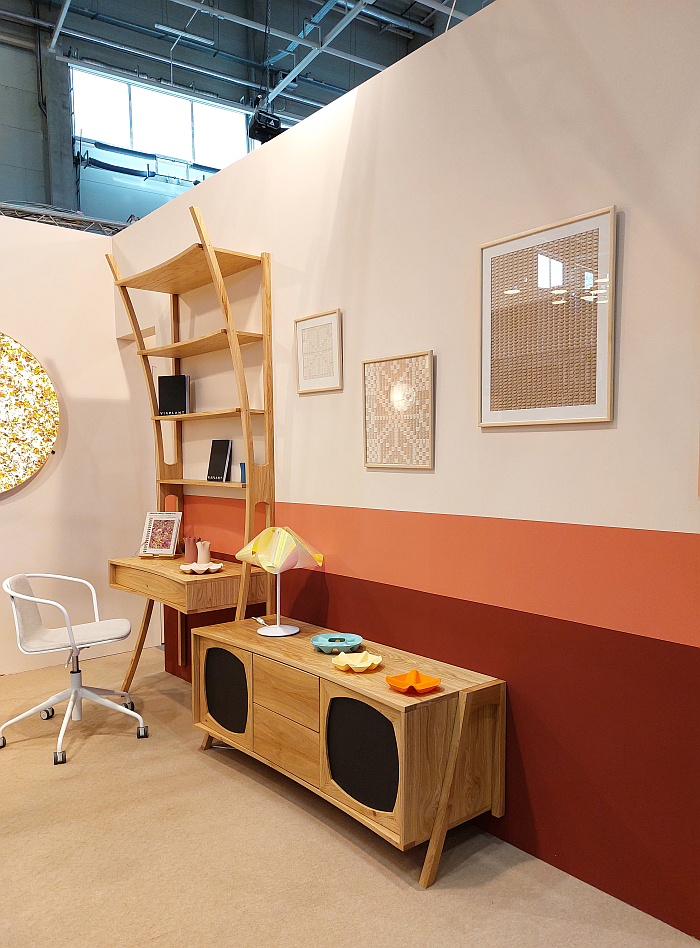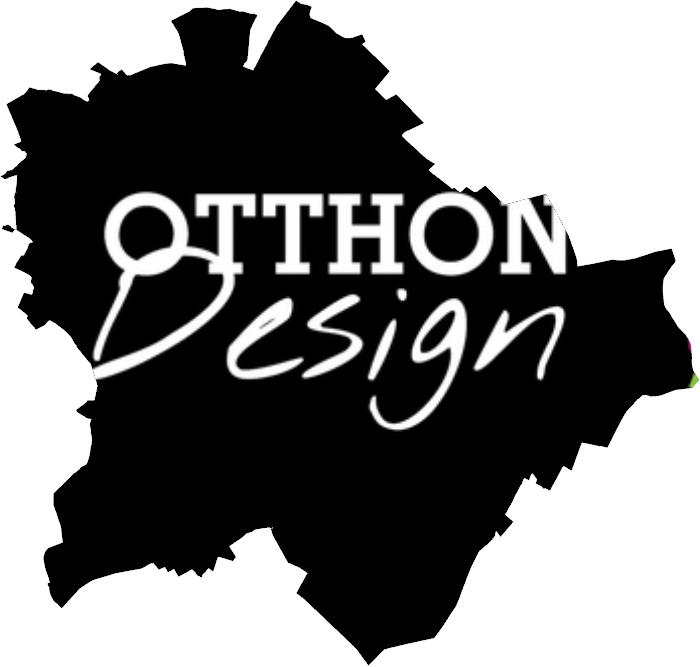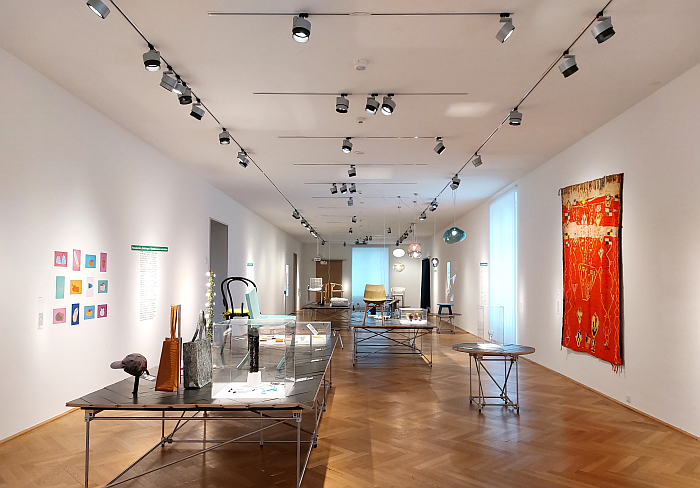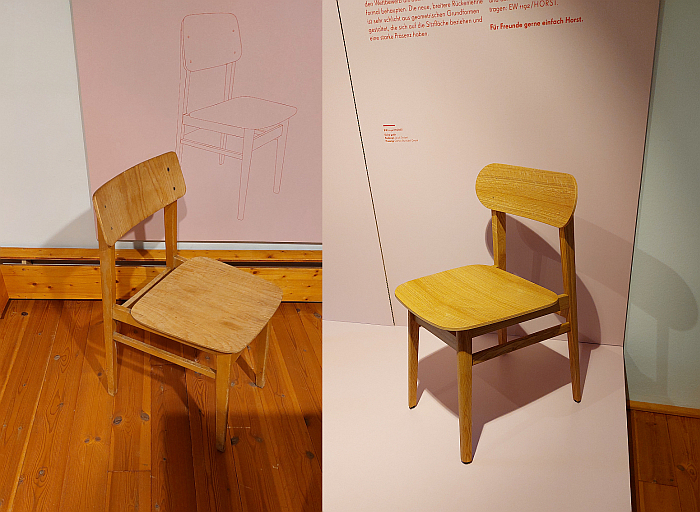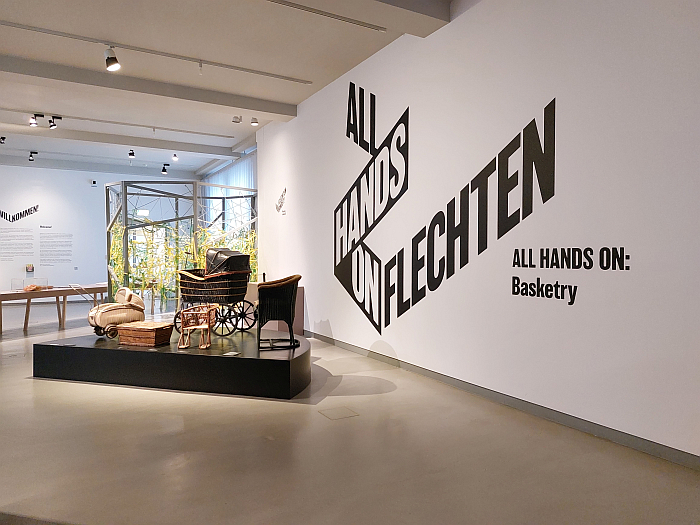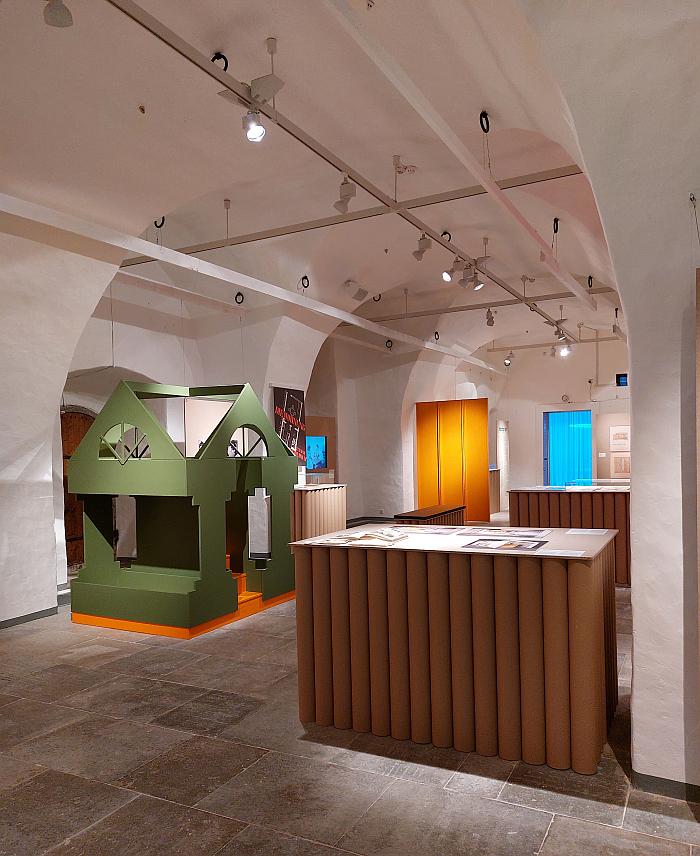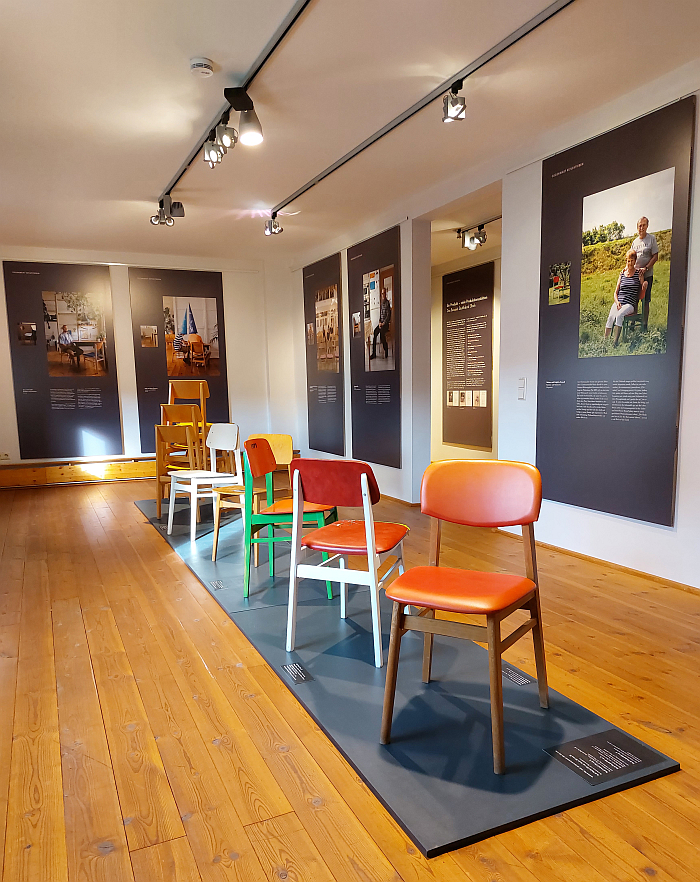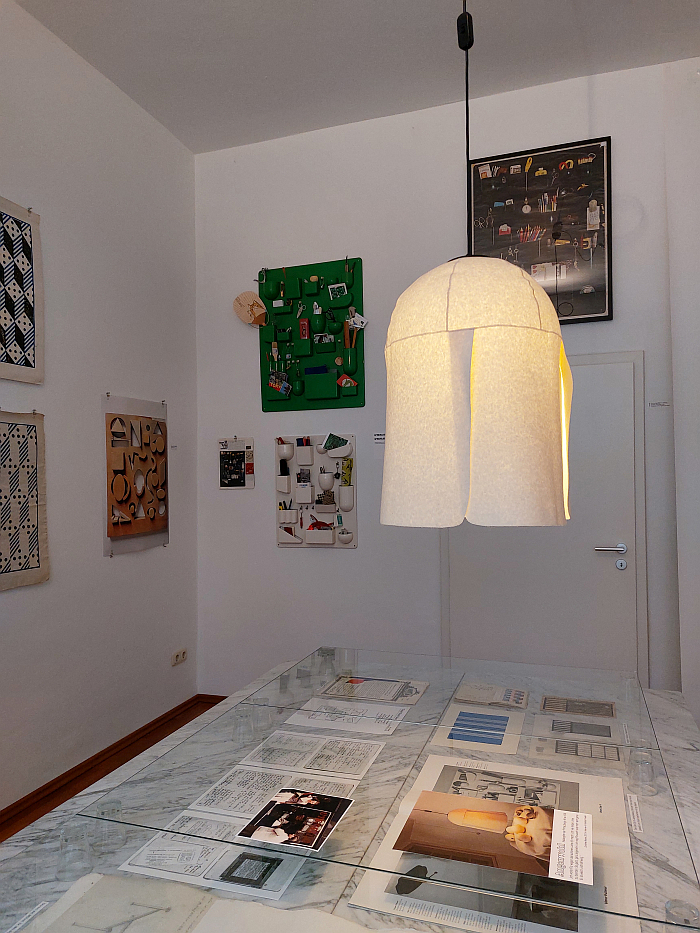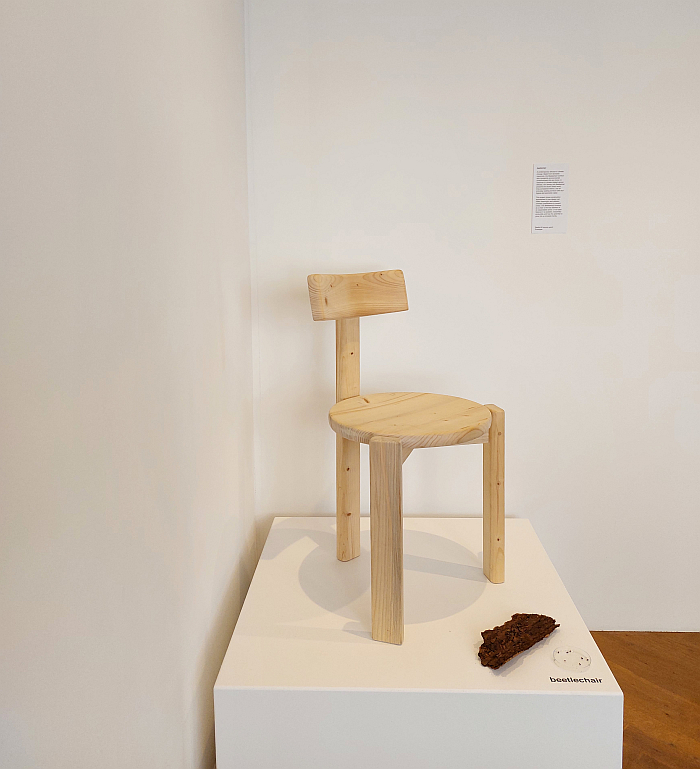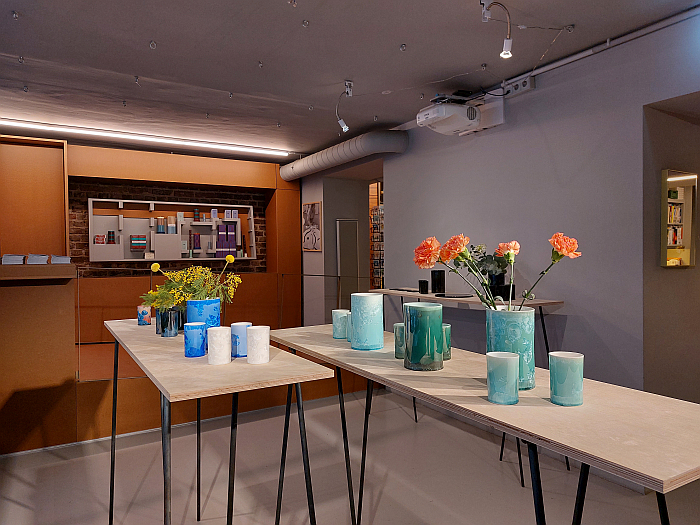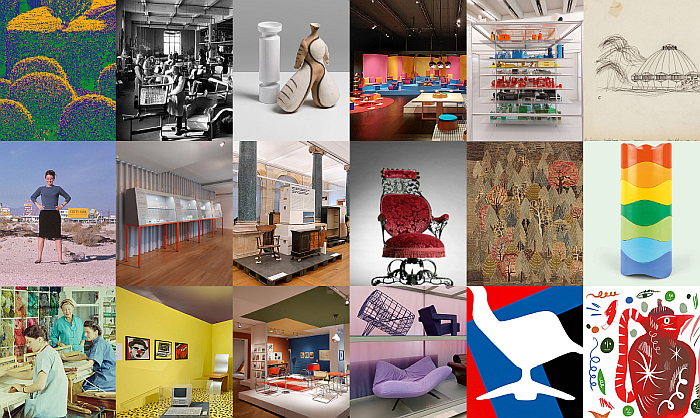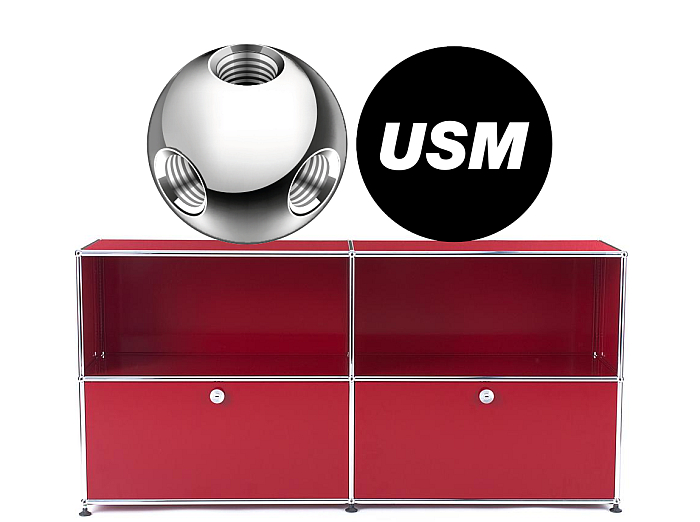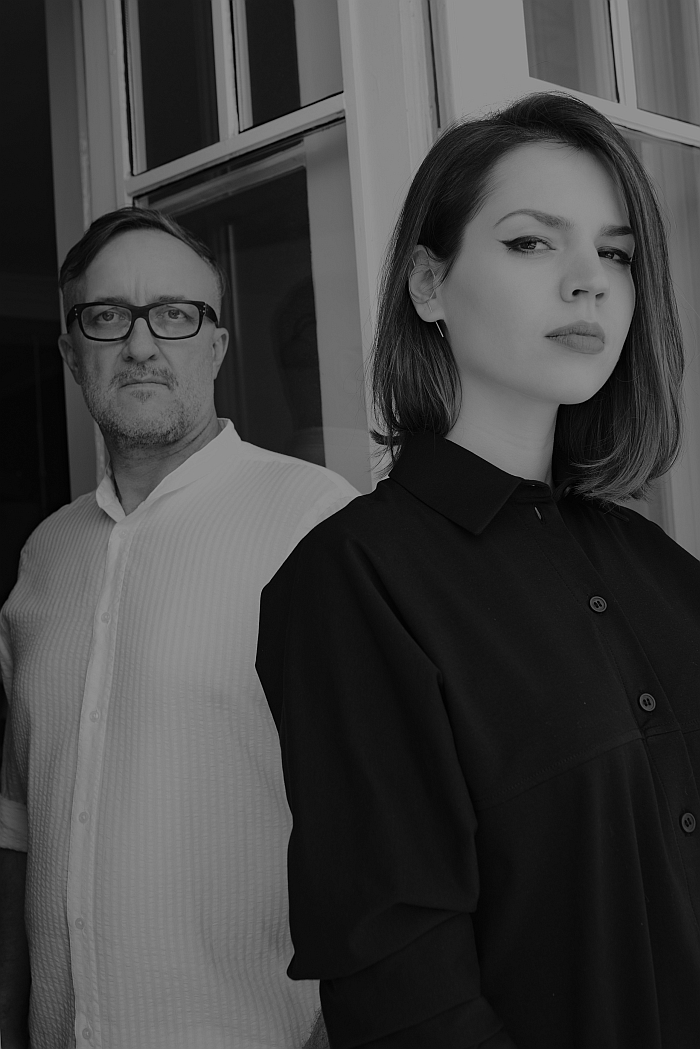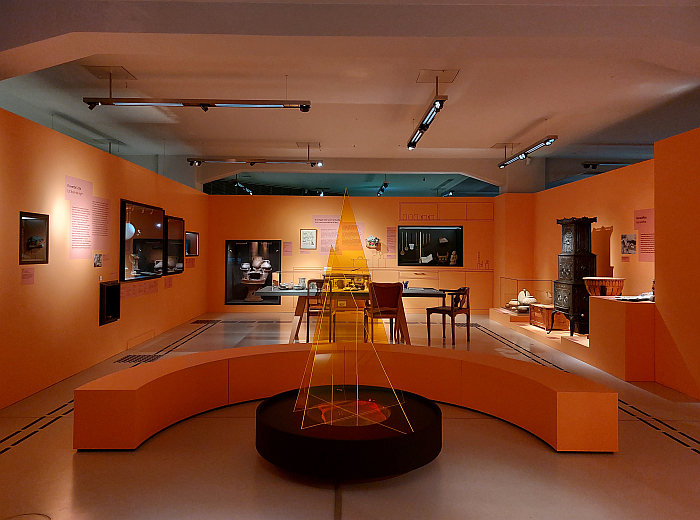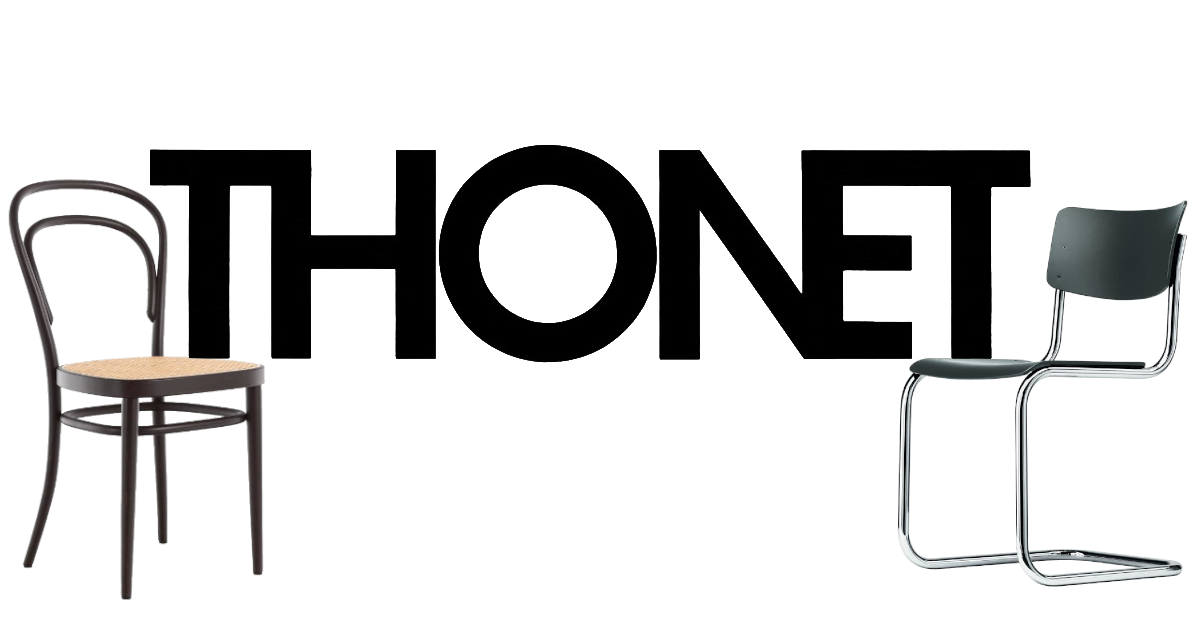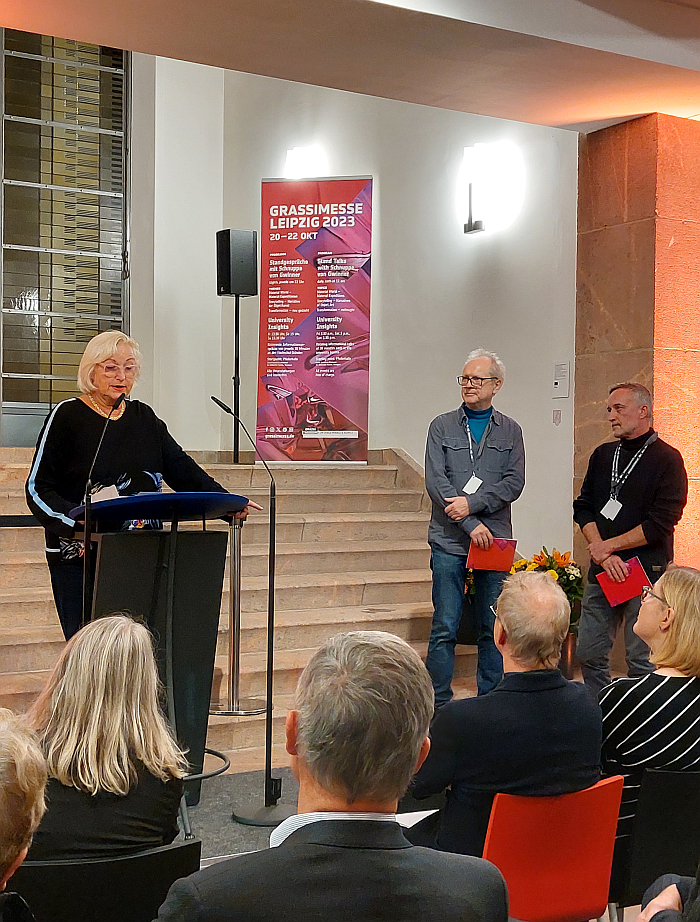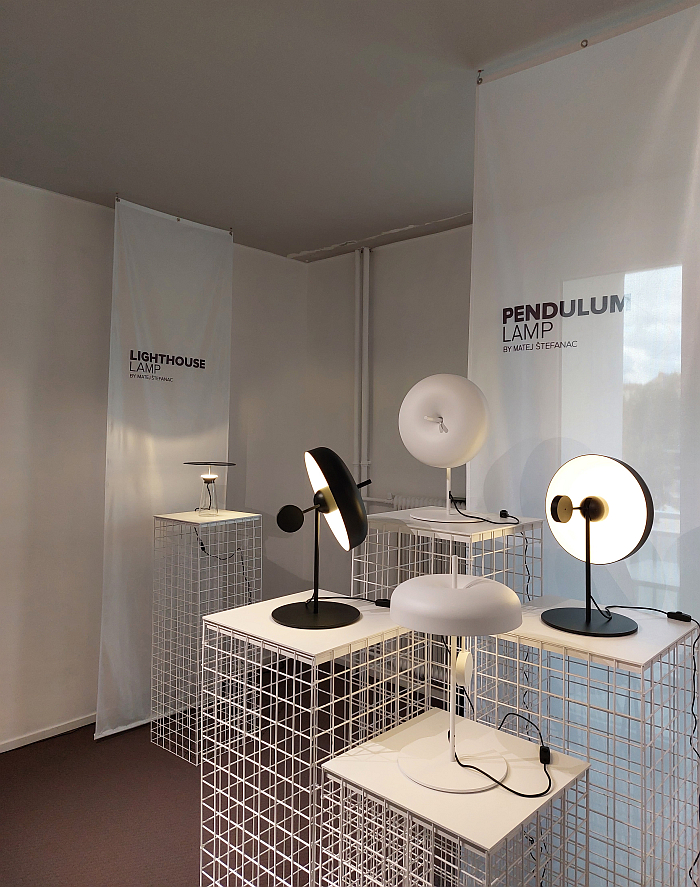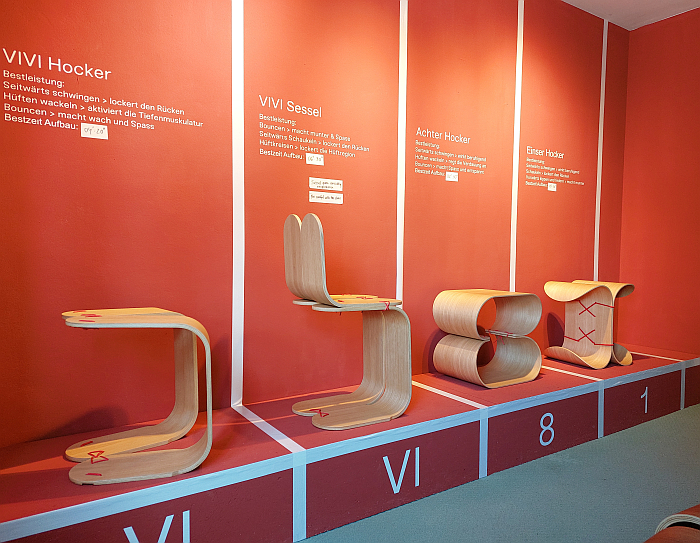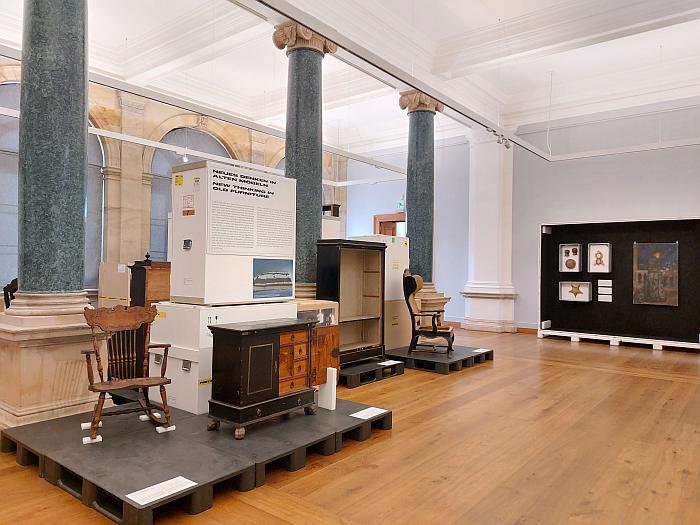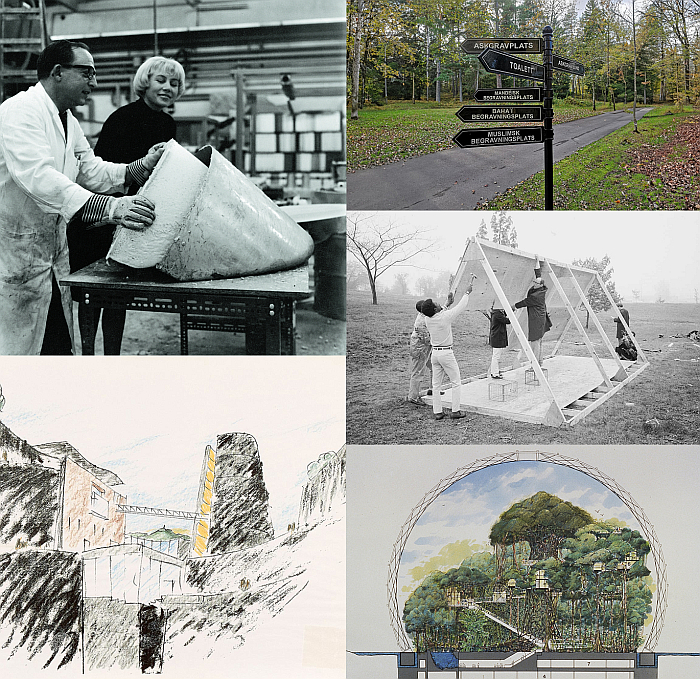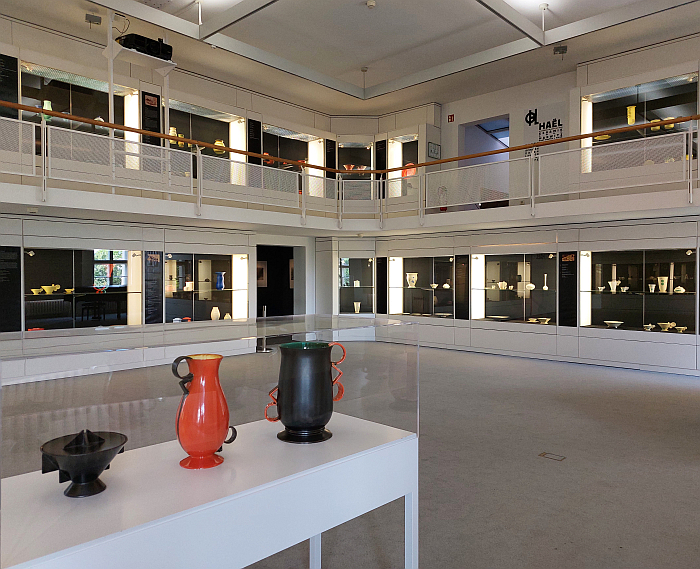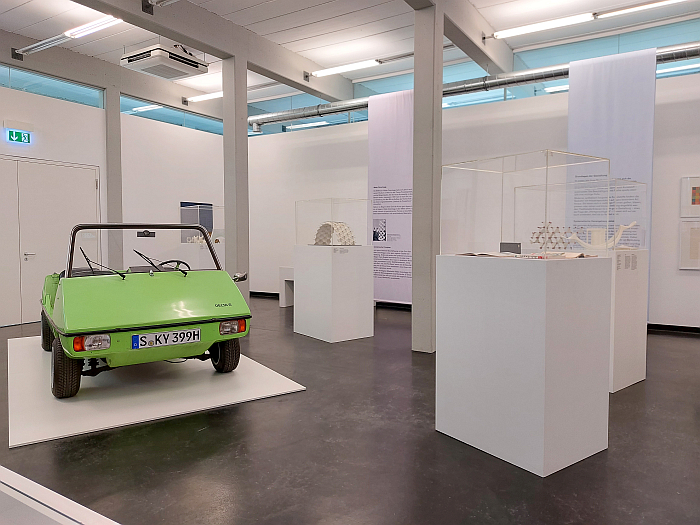Category: Everyday Design
Otthon Design Budapest 2024 Compact: Bold Collection by András Kerékgyártó for Brave Home
Perfectly Imperfect – Flaws, Blemishes and Defects at the Gewerbemuseum, Winterthur
There is a convincing argument to be made that in our contemporary age perfection is one of our primary aims, one of our guiding aims, individually and collectively. A convincing argument to be made that perfection is, to paraphrase a Shane MacGowan, ‘the measure of our dreams’. And there are no shortage of experts out there to tell us all how to achieve that perfection, in all areas of life and work and love and home and hobby.
With Perfectly Imperfect – Flaws, Blemishes and Defects the Gewerbemuseum Winterthur question perfection, and society’s fascination with perfection…….
Hallo Horst! Or, How, and why, the EW 1192 became Horst…….
As noted from the exhibition Der ungesehene Designklassiker at the Deutsches Stuhlbaumuseum, Rabenau, alongside the introduction, re-introduction, enabled to the EW 1192 by Horst Heyder, a work that was, in all probability, the most widely found, most widely used, chair in the DDR and, potentially, one of the chairs existent in the greatest population densities anywhere ever, and thus a chair that inarguably shouldn’t need to be re-introduced, but which on account of the nature of the development of Europe since 1989 sadly does, one also finds a contemporary 21st century re-design of the EW 1192 by Leipzig based designer Jacob Strobel.
A re-design that poses the question darf one re-design a work such as the EW 1192?, is one allowed to re-design a work such as the EW 1192?
¿Is one allowed to re-design a work that was one of the most widely found, most widely used, chairs in the (hi)story of a nation?
¿Is one allowed to re-design a work that so eloquently and succinctly allows access to more nuanced appreciations of the (hi)story of furniture design in the DDR?
¿Is one allowed to re-design a work that is one of the few surviving testaments to the work of Horst Heyder, an individual who played an important role in the development of furniture design in the DDR?
¿Is one allowed to re-design a work that is one of the few surviving testaments to the work of the Entwicklungsbüro Waldheim, an institution who played an important role in the development of furniture design in the DDR?
¿Is one allowed to re-design a work that is an artefact of daily life in the DDR, in a nation no longer existent?
¿Darfst du?
???
Standing in the Deutsches Stuhlbaumuseum looking at that contemporary re-design it occurred to us that there was one person particularly well placed to answer that question, one person who’d already considered it in a lot more detail than us. So we we asked them: ¿Is one allowed to re-design a work such as the EW 1192, Jacob Strobel?
¿Darfst du?
All Hands On: Basketry at the Museum Europäischer Kulturen, Berlin
Basketry has something of the archaic about it, almost anachronistic, has echoes of a past we’ve all long moved on from.
With the exhibition All Hands On: Basketry the Museum Europäischer Kulturen, Berlin allow for, demand, a critical reassessment…….
Uneversum: Rhythms and Spaces at the Estonian Museum of Applied Art and Design, Tallinn
Arguably little characterises contemporary society, certainly contemporary European society, better than our relationship with sleep.
And, arguably, little charts the path of human society, again certainly European society, better than the (hi)story of our relationship with sleep.
With the exhibition Uneversum: Rhythms and Spaces the Estonian Museum of Applied Art and Design, Tallinn, explore and reflect upon sleep, spaces of sleep, rhythms of sleep, and for all on our relationships with sleep past, present and future…….
Der ungesehene Designklassiker at the Deutsches Stuhlbaumuseum, Rabenau
Imagine you were one of the best selling and most widely used chairs in your country. But (hi)story had forgotten you.
Imagine you were informative in context of elucidating important, but rarely illuminated, chapters in the (hi)story of furniture design. But (hi)story had forgotten you.
Imagine you were instructive in context of the practice and craft and industry of furniture design. But (hi)story had forgotten you.
Imagine you were in use in a great many locations. But no-one saw you. No-one knew your name. Just sat on you.
Imagine you were the EW 1192 by Horst Heyder.
With Der ungesehene Designklassiker the Deutsches Stuhlbaumuseum, Rabenau, not only enable one to imagine, but for all begin to redress the situation……
Passagen Interior Design Week Cologne 2024: Dorothee Becker – aus dem persönlichen Nachlass
5 New Architecture & Design Exhibitions for January 2024
Time was when new architecture and design exhibitions opened every month. Some months more. Some months less. But every month enough for a list.
Time was.
But time is.
And today you’ll struggle to find new showcases opening in August and January. If that’s a collective decision made by the global museum community, or pure chance, we no know. We can but observe it’s existence as an actual thing.
Or put another way: we can find, globally, but one, as in 1, new exhibition due to open in January 2024; and 1, famously, can’t be the basis for a list.
Thus, and as with August 2023, January 2023, and August 2022, in place of recommendations for new exhibitions opening, we bring you a list of all those architecture and design exhibition currently running that you can view in January 2024. And do so with the recommendation that you view as many as possible. Because from February onwards the number of new openings increases greatly, and you may struggle to keep up…….
smow Blog Interview: Line and Round – It is a bit of a mission impossible to try to make a career as a furniture designer in Hungary
Line and Round, I O, was established in Budapest in 2017 by Annabella Hevesi, a Masters graduate from the Moholy-Nagy University of Art and Design and Gábor Bella, a Masters graduate from the “School of Life”, with a background in carpentry and numerous years experience in a variety of construction/interior/design fields, including the creation, development and realisation of escape room games, a concept that enjoys a particular popularity in Hungary, and in which context Annabella and Gábor met and began their professional cooperation.
A cooperation that in the six years since it has been staged as Line and Round has seen Annabella and Gábor develop and realise a variety of interior and furniture design projects including, for example, the creation of a locker room and press conference space for the Sopron Basket basketball team, numerous hotel and private interior projects, and the Burnt Geometry collection, Line and Round’s first self-initiated furniture collection, and part of that presentation at the 2023 Grassimesse, Leipzig, that saw Line and Round win the inaugural smow-Designpreis, or more accurately co-win the inaugural smow-Designpreis alongside Nürnberg based glassmaker Cornelius Réer.
Following their success in Leipzig we caught up Annabella and Gábor, virtually, online, to chat about their work, approaches and the realities of life as designers in the contemporary Hungary, but began by asking how Line and Round came to be, how Line and Round liberated itself from the escape room game industry…….
Home Sweet Home. The Archaeology of Domestic Life at SMAC – Staatliches Museum für Archäologie Chemnitz
In 1930 the Danish designer and educator Kaare Klint opined that in terms of furniture and furnishings, “Problemerne er ikke saa nye, de er i mange Tilfælde løst før“, “the problems are not so new, they have in many cases been solved before”.1
With the exhibition Home Sweet Home. The Archaeology of Domestic Life, SMAC – Staatliches Museum für Archäologie Chemnitz, test that theory to extreme levels, and also expand it beyond furniture and furnishings to all aspects of domestic arrangements and domesticity over the past 30,000 years…….
Grassimesse 2023: smow-Designpreis Co-Winners – Annabella Hevesi / Line and Round IO & Cornelius Réer
Let’s be honest, it wouldn’t be smow if it followed the rules and did that which you’d expected it to.
Thus it should have come as absolutely no surprise to anyone that the inaugural Grassimesse smow-Designpreis produced not the expected one, but two, joint, co-winners: Budapest based designer Annabella Hevesi and her studio Line and Round I O and Nürnberg based glassmaker Cornelius Réer…….
Klassik Stiftung Weimar Theme Year 2023: Wohnen
In context of the 1923 Bauhaus exhibition in Weimar, that first wide-ranging presentation of the school, its work and its understandings of itself and the world in which it existed, the institute presented with the Haus am Horn by Georg Muche and its interior, furniture, fittings and accessories by the likes of, and amongst others, Erich Dieckmann, Alma Buscher, Otto Lindig, Benita Otte or Marcel Breuer, a synopsis of the prevailing understandings of and positions to domestic arrangements and domesticity amongst the Weimar Bauhäusler.
With their 2023 theme year Wohnen the Klassik Stiftung Weimar take us all back to a century and a bit before Haus am Horn and to understandings of and positions to domestic arrangements and domesticity in the late-18th/early-19th century Weimar of Goethe, Schiller, Wieland, Herder et al.
And also consider possible future understandings of and positions to domestic arrangements and domesticity as we all move towards 2123…….
5 New Architecture & Design Exhibitions for September 2023
In the alpine regions of Europe the arrival of September marks the start of the Almabtrieb, that annual migration of the cattle, sheep and goats of the region from their high pastures to the valleys far, far below.
A migration undertaken because, as the cattle, sheep and goats of the alps innately understand, September is the month when the global architecture and design museum community (slowly) end their summer siesta and begin to invite us all to peruse their autumn/winter exhibition programmes.
And a migration that looks particularly worthwhile in September 2023, being as it is abloom with a crop of new showcases every bit as enticing and flavoursome as the herb rich pastures of any alpine alm. Indeed so bountiful is the September 2023 harvest we could have written two lists. For probity’s sake we stick with the one.
Our five reasons for saying Servus, Tschüs and Adieu to the fresh air and green, green, grass of the high alps and venturing into the city can be found in Frankfurt, New York, Kolding, Vienna and Malmö…….
Haël. Margarete Heymann-Loebenstein and her workshops for decorative ceramics 1923-1934 at the Bröhan Museum, Berlin
The popular Bauhaus focus, preoccupation, of discussions on creativity in the 1920s very naturally leads to us all ignoring other important protagonists, causes us all, when oft unwittingly, to miss other equally valid, and enjoyable, paths to appreciations of developments in craft, design, technology and our objects of daily use in the early decades of the 20th century, that important, and still very relevant, period where handwork increasingly ceded to industry.
With Haël. Margarete Heymann-Loebenstein and her workshops for decorative ceramics 1923-1934 the Bröhan Museum, Berlin, helps one locate, and begin to explore, one of those regularly overlooked paths and thereby allows one to begin to develop those more probable appreciations…….
The Historia Supellexalis: “S” for Switzerland
Switzerland
A Confoederatio; A Range; A Context
Plastic Material − Magic Material: Freedom and Limits of Design at the HfG-Archiv, Ulm
Arising in the early 1950s from a collective, a community, who had been ardently opposed to the NSDAP, their world view and their warmongering dictatorship, the Hochschule für Gestaltung Ulm understood itself very much in context of the post-War re-development of society, the post-War development of a new democratic, future-resilient, society. In West Germany and further afield.
Thus it is little wonder that synthetic plastics, that material class which post-War offered, embodied, (seductively, unscrupulously) foretold, the promise of a borderless democracy, an egalitarian global society, should have been a material of experimentation and utilisation at the Hochschule für Gestaltung Ulm.
With Plastic Material − Magic Material: Freedom and Limits of Design the HfG-Archiv, Ulm, reflect on synthetic plastics in context of the Hochschule für Gestaltung Ulm. And also in context of society and democracy…….
